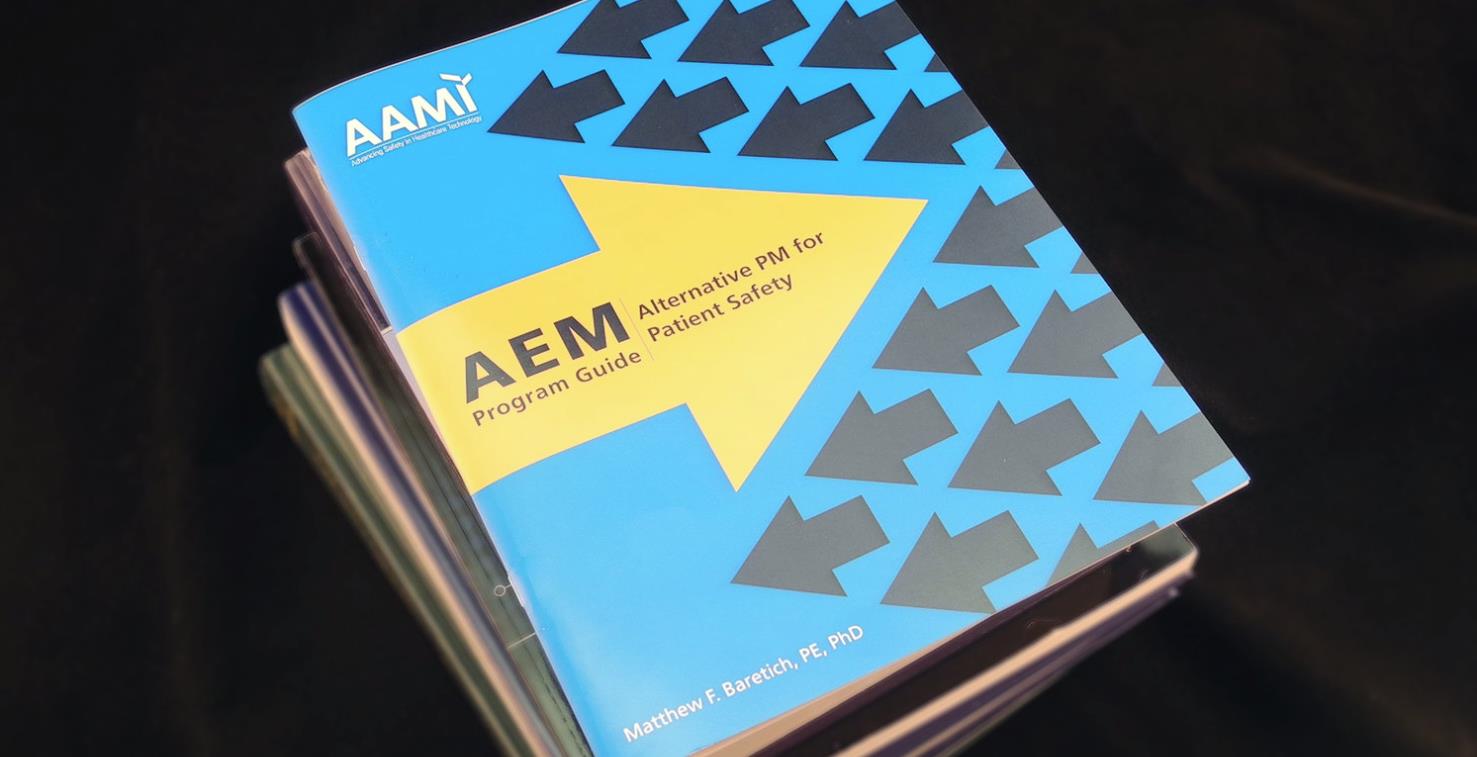
There’s a lot of confusion in the HTM (Healthcare Technology Management) community about AEM programs. CMS (Centers for Medicare and Medicaid Services) says AEM stands for “alternate equipment management.” The Joint Commission, which bases its standards on CMS, says (usually but not always) that it stands for “alternative equipment maintenance.” Disagreement about two words in a three-word phrase is just the beginning.
If we’re going to reap the benefits of AEM, we need to work our way through the confusion. That’s why I wrote the AEM Program Guide: Alternative PM for Patient Safety, published in late 2017 by AAMI (Association for the Advancement of Medical Instrumentation).
What is AEM? It’s a concept originated by CMS about medical equipment maintenance. CMS started with an assumption that the “gold standard” for planned maintenance (PM) is whatever the equipment manufacturer recommends. Who would know better than the manufacturer? However, CMS recently began to allow hospitals to develop (within strict and sometimes confusing limits) alternative PM procedures that modify manufacturer recommendations in terms of PM activities (what we do) and PM frequencies (when we do them).
Why would a hospital bother to set up an AEM program? Why not just follow the manufacturer’s recommendations? The answer is clear: AEM programs, if done right, can save hospitals lots of PM time, and time equals money.
The challenge is making sure the AEM program is done right. That means carefully following the rules that CMS has set out (and that accrediting organizations like The Joint Commission have incorporated into their standards). One of the very reasonable CMS rules is that an AEM program cannot reduce equipment safety, which brings up two important questions we need to consider when we decide to implement an AEM program.
-
First, as we initially establish our AEM program, how do we decide which aspects of a manufacturer’s recommendations are OK to modify? For example, would it be safe to replace infusion pump batteries less often than recommended? Maybe, if we have good evidence.
-
Second, as we operate our AEM program over time, how do we monitor the effects of our initial decisions? For example, has our alternative schedule for battery replacement had an adverse effect on infusion pump safety? That requires careful tracking of safety and performance metrics.
The AAMI standards group is planning to develop a formal standard for AEM programs. However, because the standards-making process is, for understandable reasons, rather time-consuming, AAMI asked me to write something that could provide interim guidance — something to help hospitals save PM time, comply with CMS requirements, and keep patients safe. I took the job seriously but, very intentionally, wrote the guide in an informal style so that no one would confuse it with a formal standard. In other words, I had fun writing it.
Much of the book is an attempt to unsnarl, disambiguate, and explain CMS and Joint Commission requirements. I have read enough journal articles, sat through enough presentations, and heard enough comments from colleagues to know that many HTM professionals don’t fully understand the requirements (nor do many surveyors). As a result, many HTM programs either do too little (and are out of compliance with AEM rules) or do too much (from misinterpreting what’s actually required).
In addition to explanatory material, the guide has several “sidebars” that offer background information and some commentary that I thought would be useful. For example:
-
Do the Right Thing. How to get back on track if you haven’t exactly been following the rules so far.
-
PM-Preventable Failures. A promising method for monitoring the safety of a PM program.
-
Professional Judgment. Under what conditions might we temper evidence with expertise?
-
The Right Way and the Wrong Way to Talk About Risk. An attempt to counter sloppy thinking.
Unfortunately, there is not yet a consensus within the HTM community about exactly how to implement an AEM program. In the absence of consensus (and the forthcoming AAMI standard) the guide points out some ideas that I believe represent the best thinking about AEM issues. Many of these ideas came from colleagues (listed in the Acknowledgements section) who took the time to engage in spirited discussions and provide constructive criticism. I’d love to get your input, too.
